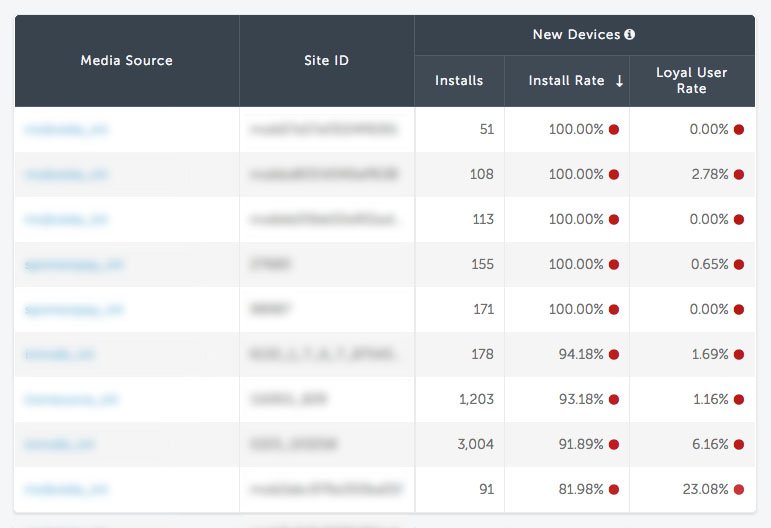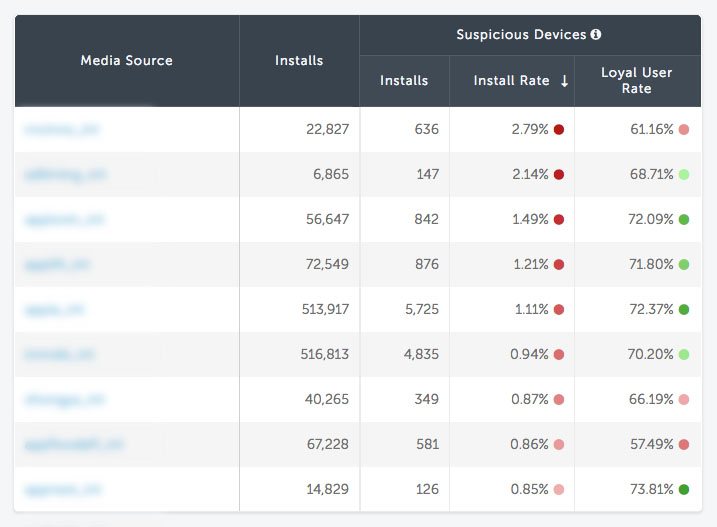
Install fraud
Install fraud refers to a genre of mobile ad fraud – ranging from low tech schemes like device farms to relatively complex tactics like SDK spoofing – where criminals find ways to fake app installs.
What is install fraud?
Install fraud can be loosely categorized into two buckets: human and artificial.
Types of tactics that would constitute human install fraud would be things like device farms or phone farms.
Under the umbrella of artificial install fraud there are many ways to fake installs including the use of bots, server-based installs, install hijacking, device-based install fraud, DeviceID reset fraud, DeviceID reset marathons, and ad fraud hiding behind Limit Ad Tracking, among other things.
How does install fraud work?
This type of fraud is most often perpetrated by ad networks or publishers trying to take advantage of CPI (cost per install) campaigns.
Under a CPI model, advertisers pay by the install meaning the more installs that are generated, the more money networks and published can make.
Install fraud detection
Where install fraud was once hard to detect, comprehensive fraud dashboards now provide accessible, real-time insights – look for high concentrations of new devices to identify DeviceID reset fraud and large numbers of new devices at scale indicate DeviceID Reset Marathons.

Similarly, high install volume from DeviceIDs rated as suspicious indicate install fraud, particularly when accompanied by low retention rates.

High concentrations of installs from sources with Limit Ad Tracking enabled indicate install fraud.




